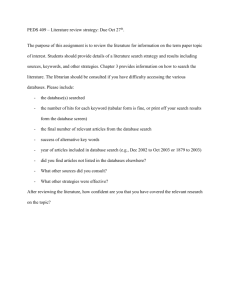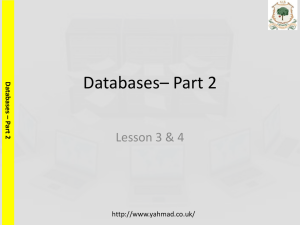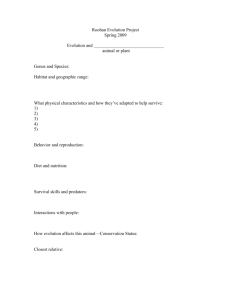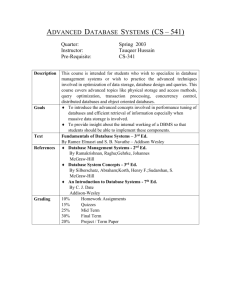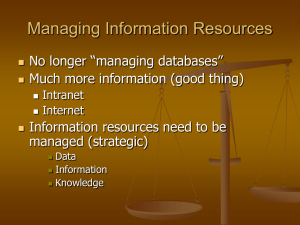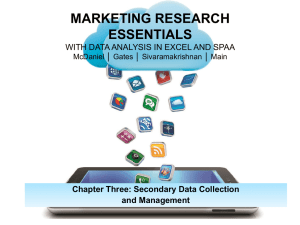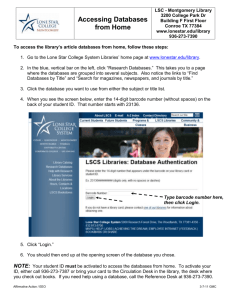Databases in Primary Schools: Lesson Material
advertisement
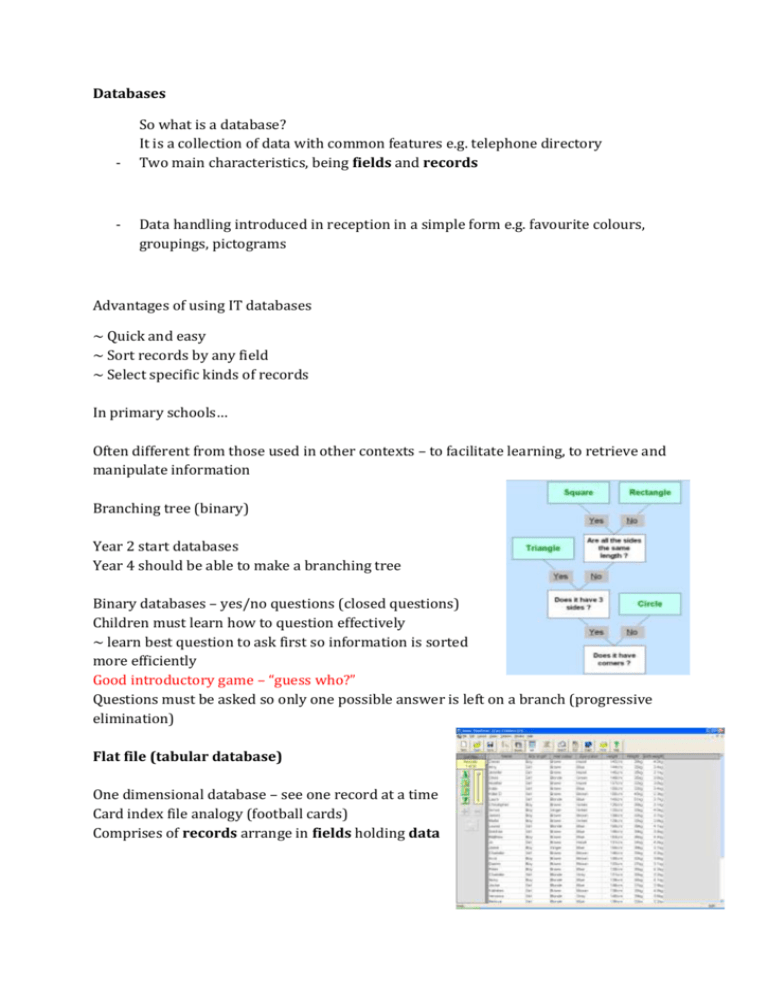
Databases - - So what is a database? It is a collection of data with common features e.g. telephone directory Two main characteristics, being fields and records Data handling introduced in reception in a simple form e.g. favourite colours, groupings, pictograms Advantages of using IT databases ~ Quick and easy ~ Sort records by any field ~ Select specific kinds of records In primary schools… Often different from those used in other contexts – to facilitate learning, to retrieve and manipulate information Branching tree (binary) Year 2 start databases Year 4 should be able to make a branching tree Binary databases – yes/no questions (closed questions) Children must learn how to question effectively ~ learn best question to ask first so information is sorted more efficiently Good introductory game – “guess who?” Questions must be asked so only one possible answer is left on a branch (progressive elimination) Flat file (tabular database) One dimensional database – see one record at a time Card index file analogy (football cards) Comprises of records arrange in fields holding data Relational ~complex structure ~ information tagged ~ tagging interrelates data ~greater flexibility in interrogation ~features menus, indexes, keyword searching (Google), hyperlinks NC Programme of Study How does work with databases relate? Finding things out ~ rapid retrieval of data ~refining questioning skills ~ analysis and interpretation Developing idea and making things happen ~ making predictions ~ testing hypotheses ~ decision-making Exchanging and sharing information ~ organising and structuring ~ analysing, interpreting, synthesising and presenting ~ presenting and interpreting graphical information ~ exploring relationships, inconsistencies and errors Legal and ethical issues ~ Data Protection Act ~Privacy and sensitivity Using a database in teaching ~ have clear understanding about how it will help develop the children's subject knowledge, understanding and skills and what ICT capability they will be developing. YOU will need to consider issues such as: ~ Is the data set I want to use available and appropriate for the subject and age? ~ Should I adapt an available data set to make it more appropriate to the children's needs? ~ Should I create and save a data structure and input a data set for the children to use? ~ Should I provide the children with a partially complete data set for them to use? ~ Should I provide the children with a database structure for them to input the data set? Is it appropriate for the children to create the database structure and input the data?


